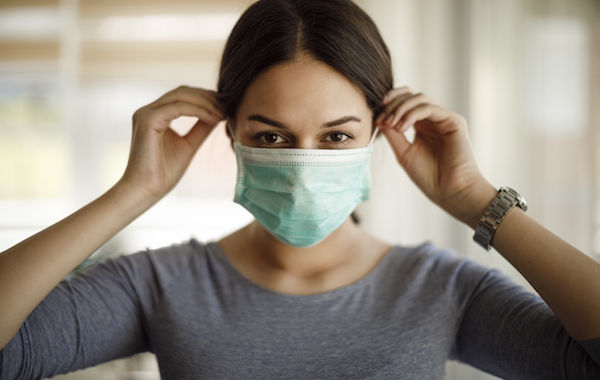
Until recently, COVID-19 was thought to attack only the respiratory system. According to the state of current knowledge, based on the results of many studies conducted, it is known that the disease can also affect other areas in the body. Find out what signals to pay special attention to?
Unusual symptoms of COVID-19 – where do they come from?
COVID-19 attacks not only the respiratory system. Due to new mutations of the SARS-CoV-2 virus, it is increasingly common to encounter skin lesions, neurological symptoms from the central nervous system or gastrointestinal disorders. Recognition of atypical symptoms in the course of COVID-19 is very important for the diagnosis of the disease, isolation of the patient and interruption of virus transmission, as well as tracking possible postcoviral complications.
Read: Coronavirus – what do you need to know?
Atypical symptoms of COVID-19 – nervous system
According to observations, atypical symptoms of COVID-19 include those of the central nervous system. These include:
- dizziness and headaches;
- sudden changes in mental state – disorientation, apathy, disturbance of consciousness;
- acute cerebrovascular disease.
Observations have shown that patients showing reduced lymphocyte counts and elevated D-dimer levels are more likely to experience neurological symptoms involving the central nervous system. According to a study published in The Lancet, similar symptoms were reported by 8% of patients.
Atypical symptoms from the peripheral nervous system include:
- abnormalities in the perception of odor stimuli;
- dysosmia (weakness of the sense of smell);
- asnosmia (complete loss of smell).
Olfactory and taste disturbances appear early in the course of the disease. It has been observed that these disease symptoms more often affect women.
Another neuromuscular symptom that occurs in COVID-19 patients is Guillain-Barre syndrome (GBS). This is a progressive disorder that leads to muscle weakness due to peripheral nerve damage. It manifests as sensory disturbance in the fingers or toes and gradual loss of muscle strength in the extremities. The mechanism of GBS in COVID-19 is not well understood, and is still under investigation. However, it is known that SARS-CoV-2 infection initiates an autoimmune response and inflammation.
Other unusual symptoms of COVID-19 – gastrointestinal tract and skin lesions
SARS-CoV-2 coronavirus infection is also relatively often accompanied by gastrointestinal disorders. A meta-analysis of 4243 cases showed that gastrointestinal symptoms were present in 17.6% of patients, and the presence of SARS-CoV-2 virus RNA was detected in 48% of stool samples. The most commonly described symptoms include diarrhea, nausea, vomiting and abdominal pain.
Skin lesions are also among the most common atypical symptoms of COVID-19, with skin complications occurring among nearly 10% of patients. The most common skin symptom is a maculopapular rash. Urticaria and vesicular eruptions, which resemble the vesicles that appear in chickenpox, are also observed. The skin lesions are located mainly on the trunk and extremities. Their probable cause is changes in small blood vessels. The average duration is about 9 days.
According to an official WHO communiqué, atypical symptoms that may indicate COVID-19 are also discoloration of the fingers and toes. Sufferers observe red or purple patches on their feet, accompanied by a sensation of itching and burning. Vascular lesions are also responsible for the cause of this condition.
Rare symptoms of COVID-19 – organ of vision
Among the uncommon symptoms of COVID-19, changes from the visual organ are also encountered. About 1% of patients experience conjunctivitis. In some cases, ocular symptoms can also be more varied and include hemorrhagic conjunctivitis and chemosis (massive conjunctival swelling).
Reports of unusual ocular complaints initially appeared in an account by an American nurse who cared for COVID-19 patients, and over time were confirmed by the American Academy of Ophthalmology and the Polish Ophthalmological Society. The World Health Organization also officially recognized conjunctivitis as one of the atypical symptoms of coronavirus.
How to protect yourself from SARS-CoV-2 infection?
The most important factor in the prevention of coronavirus infection is the vaccine against Covid-19. Prevention is besides minimizing the risk of infection. Remember that all unusual symptoms should be consulted with a doctor as soon as possible. It is also worthwhile to perform on your own tests to detect the presence of the virus in the body by molecular methods, namely RT-PCR and RT-LAMP, and by a cheaper, though less sensitive method – the antigen test.
